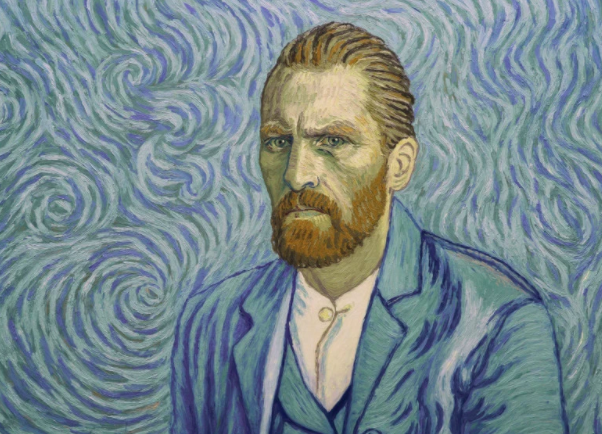The Starry Silver Screen
November 20, 2017
Dutch painter Vincent Van Gogh, a prominent art figure in my life for as long as I can remember, takes on the silver screen in the new film Loving Vincent, which released in theaters on September 22.
Directed by filmmakers Dorota Kobiela and Hugh Welchman, the animated painting movie—the very first of its kind—centers around the life and unfortunate death of Van Gogh.
The esteemed and quiet painter is portrayed by Polish actor Robert Gulaczyk. The film begins on July 28, 1890, when Van Gogh stumbled across the streets of small French town Auvers: he had shot himself.
Advised by his father, Postman Joseph Roulin (Chris O’Dowd), a young British man named Armand Roulin, played by Douglas Booth, delivers the last letter Van Gogh ever wrote which was addressed to the artist’s brother, Theo Van Gogh.
Along the way, Roulin meets various people telling various stories about Van Gogh’s life, ultimately leading to the day he shot himself, dying in his bed two days later.
The film has an overall melancholy tone as Van Gogh lived a very sorrowful life, only ever selling one painting out of the 800 he created in his lifetime. His childhood was filled with neglect and torment.
His psychiatrist, a man by the name of Doctor Gashet, could not cure Van Gogh of his depression. Van Gogh was also not the first of his siblings, but the oldest. Thus, he could never live up to his parents’ expectations, living a quiet and lonesome childhood.
All scenes of Van Gogh’s early life were depicted by black and white sketches with such articulate features that they truly resembled the actual actors.
Although somber, the illustrations complemented the sadness of Van Gogh’s childhood and life in general. Even with the melancholia he faced, and even though Gashet could not cure him, there were still gleams of hope in his life.
He made a connection with Gashet’s daughter, Marguerite Gashet (Saoirse Ronan), and every day after his death she brought flowers to his grave. The Netherlands native also mastered his craft in just eight short years.
Despite the overwhelming sadness, every single frame of the movie is a masterpiece within itself. The film was shot with the actual actors, but the scenes were painted over frame by frame.
Using 100 painters in a seven-year span, over 65,000 frames were painted on over 1,000 canvases—and it truly pays off. The scenes are absolutely breathtaking, to say the least. They bring some of his most classic pieces to life, such as “Starry Night,” “Café Terrace at Night,” and “Bedroom in Arles.”
Every detail—the mannerisms of the cast members, their clothing, the swaying of the trees, the smoke escaping cigarettes, the light radiating from candles—is truly beautiful.
The black and white drawings also seem to juxtapose his paintings: the flashbacks of his morbid life make the paintings ever more vivid, reminding me of his influence in art history and bringing a sense of nostalgia to my heart.
As a child, I remembered learning about Van Gogh through my father, and here and there throughout school or educational programs, such as The Little Einsteins. My life and knowledge of art is richer because of him.
I am overjoyed that this film has come to theaters, and that even though Van Gogh was unknown in his existence, his legacy shines brighter than the twinkling stars of his night landscapes.





